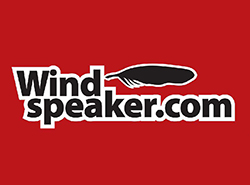
By Shari Narine - Raven’s Eye
An Enbridge official says it is not unusual for the company to undertake a nearly $5-million advertising campaign to promote a project.
Paul Stanway, spokesman for the company, said the Northern Gateway Project ad campaign that kicked off in British Columbia will consist of TV, radio and Internet spots until possibly the end of the year, and is not being done out of desperation. It is now the right time.
“We’ve put an awful lot of effort into public consultation along the right of way the last several years,” he said. “The more people know about Northern Gateway the more likely they are to be comfortable with it.”
But representatives from two First Nations organizations that are vocally opposed to the project say otherwise.
“I think the way to characterize (Enbridge’s campaign) is it’s kind of their last ditch effort. The project doesn’t stand a chance without them being able to repaint the picture,” said Art Sterritt, executive director with Coastal First Nations.
“They’re trying to characterize this as somehow Enbridge’s future is British Columbia’s future and B.C. is not buying it…. Calling it a gateway to the future is not a pretty picture when you’re sitting on our side of the fence,” Sterritt said.
Coastal First Nations is an alliance of First Nations on the province’s north and central coast and Haida Gwaii. Enbridge’s Northern Gateway Project includes the construction of the Kitimat marine terminal, which would have two ship berths and storage for three condensate tanks and 11 petroleum tanks. The proposed tanker routes would travel along the Coastal First Nations.
“(Enbridge) tried the ethical oil campaign and, in my opinion, it failed dismally. They’ll try every avenue they can take to convince British Columbians that this project is a good project when, in fact, it is not,” said Chief John Ridsdale of the Wet’suwet’en First Nation. Ridsdale was one of a number of chiefs from the Yinka Dene Alliance to undertake the Freedom Train campaign that saw protestors cross the country in May and end with a demonstration at Enbridge’s annual shareholders meeting in Toronto.
The Yinka Dene Alliance is a coalition of Carrier and Sekani First Nations in northern B.C. whose territory comprises 25 per cent of the proposed route for Enbridge’s 1,172-kilometre pipeline that begins in Bruderheim, near Edmonton.
Stanway said the campaign to reach the B.C. public is important because the general populace is “totally unfamiliar with oil pipelines…. In that area, there’s not a lot of experience with our industry.”
Stanway said that having a coastal component to Enbridge’s development is also new to the company as it has never operated a marine terminal before.
“Nobody is trying to say there aren’t environmental issues around building a $5.5 billion oil pipeline, (but) we’ve been dealing with these issues for almost a decade,” he said. “An enormous amount of environmental work has gone into this project. People need to hear that we have looked at these concerns; that we have answers.”
Sterritt said an advertising campaign like this is clear indication that Enbridge doesn’t want a discussion.
“They’re not interested in talking to people. They just want to get their message out,” he said. “The difference on our side is that we’re quite willing to debate the issue.”
Sterritt added that 80 per cent of the B.C. public is opposed to tanker traffic on the coast.
Stanway said Enbridge’s figures indicate that half the B.C. public supports the Northern Gateway Project.
Shortly after the campaign was launched, Enbridge announced that 60 per cent of the 43 First Nations and Metis groups within an 80 km radius of the proposed route have signed up for the company’s 10 per cent equity share. He said there is an equal amount in B.C. and Alberta. Stanway cited confidentiality for not being able to release the names of the First Nations or Metis groups.
Ridsdale is cynical about Enbridge’s tight-lipped stance.
“We’re forthright with who’s opposed to it. We’ve made that public numerous times with our declaration,” he said.
The Save the Fraser declaration, which in part bans the Northern Gateway Project and all other similar projects from the traditional First Nations’ territories, has been signed by more than 100 First Nations.
Signing on for financial benefits is not the same as supporting the project, said Sterritt, who pointed out that there are three First Nations in B.C.’s interior who have signed both the Fraser declaration and signed on with Enbridge.
“All it means, if the project ever goes ahead in the next decade or two, that they actually get some revenue out of it,” he said.
According to Enbridge, the 10 per cent equity sharing agreement would allow signatories to share about $280 million over 30 years.
Stanway said the campaign undertaken by the B.C. First Nations, which is supported by environmental groups, “is a much broader campaign ... to prevent development in the Alberta oil sands.”
“Quite often you’ll find first (Enbridge) will oppose you and then they try to discredit you and in the end you win, because they’re reaching for straws right now,” said Ridsdale. “They’re grasping and grasping and they have nothing they can lay a foundation on because British Columbians understand we’re taking all the risks and there are no benefits for such a major project.”
Stanway said Enbridge may undertake a promotional campaign in Alberta, although it would be a “different conversation….People are more informed. They’ve been dealing with oil and gas for many years. The comfort level is considerably higher in Alberta.”
